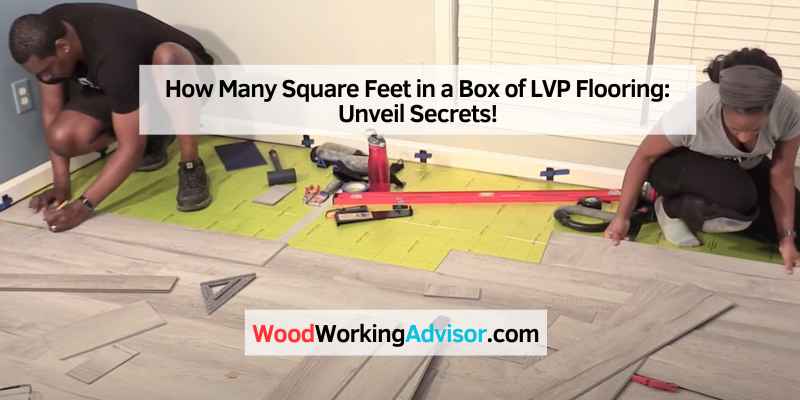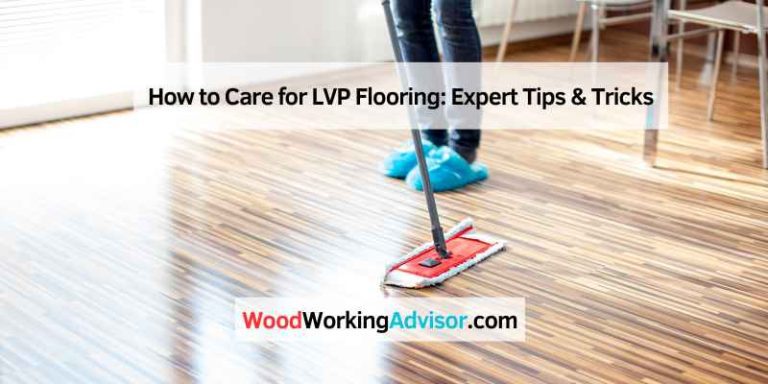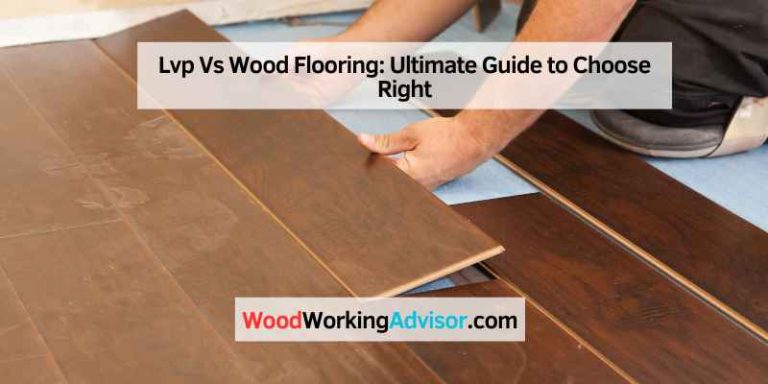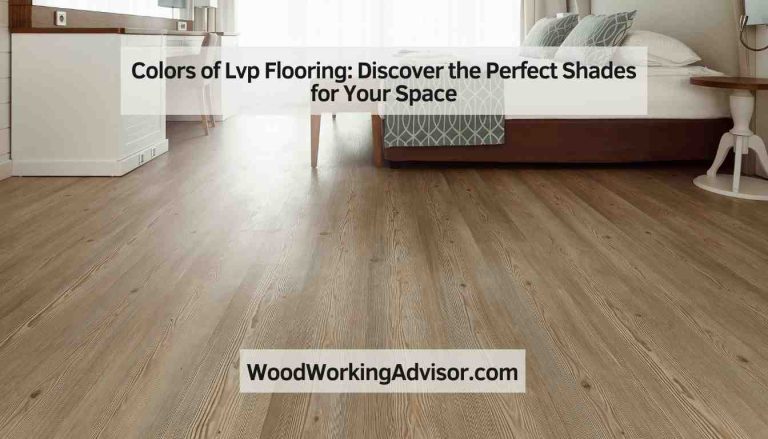How Many Square Feet in a Box of LVP Flooring: Unveil Secrets!
A box of LVP flooring typically covers 20 to 30 square feet. The exact amount varies by manufacturer.
LVP flooring, or luxury vinyl plank, is a popular choice for modern homes. It offers durability, easy maintenance, and aesthetic appeal. This type of flooring mimics the look of hardwood but comes at a fraction of the cost. Many homeowners prefer LVP for its water-resistant properties, making it ideal for kitchens and bathrooms.
Installation is straightforward, often requiring no glue or nails. As a result, it’s a favorite among DIY enthusiasts. Knowing the square footage a box covers helps in planning and budgeting your project efficiently. Always check the specific product details for accurate measurements.
Introduction To Lvp Flooring
Luxury Vinyl Plank (LVP) flooring has become a popular choice for homeowners. It offers a blend of beauty and durability. LVP flooring mimics real wood and stone. It’s also affordable and easy to maintain.
The Rise Of Luxury Vinyl Plank
LVP flooring has seen a surge in demand. This is due to its realistic look and feel. It also comes in various designs and colors. Many people prefer LVP over traditional hardwood. It’s less expensive and more water-resistant. This makes it ideal for kitchens and bathrooms.
Key Benefits Of Choosing Lvp
- Durability: LVP flooring is highly durable. It can withstand heavy foot traffic and daily wear.
- Water Resistance: LVP is water-resistant, making it perfect for wet areas.
- Easy Installation: You can install LVP flooring easily. It often features a click-lock system.
- Low Maintenance: LVP flooring requires minimal upkeep. Regular sweeping and occasional mopping are enough.
- Cost-Effective: LVP provides a luxurious look without the high cost. It’s a budget-friendly option for many.
Essentials Of Lvp Flooring Dimensions
Understanding the dimensions of Luxury Vinyl Plank (LVP) flooring is crucial. It helps in planning and buying the right amount for your space. This section covers the essentials of LVP flooring dimensions. You’ll find details about standard plank sizes and thickness variations.
Standard Plank Sizes
LVP flooring planks come in various sizes. The standard sizes make it easy to fit in different rooms. Common plank lengths range from 36 inches to 48 inches. Widths usually vary between 4 inches and 8 inches.
Here is a quick table for reference:
| Length (inches) | Width (inches) |
|---|---|
| 36 | 4-6 |
| 48 | 6-8 |
Always check the product details. Sizes can vary by brand and style. Knowing the plank size helps in calculating square footage per box. This ensures you buy the right amount.
Thickness Variations
The thickness of LVP flooring varies. Thicker planks are usually more durable and comfortable. Common thicknesses range from 2 mm to 8 mm.
Here’s a breakdown:
- 2-3 mm: Budget-friendly, suitable for low-traffic areas.
- 4-5 mm: Medium durability, good for most homes.
- 6-8 mm: High durability, ideal for high-traffic areas.
Thicker planks often have better sound insulation. They also feel more like real wood underfoot. Check the thickness before purchasing to match your needs.
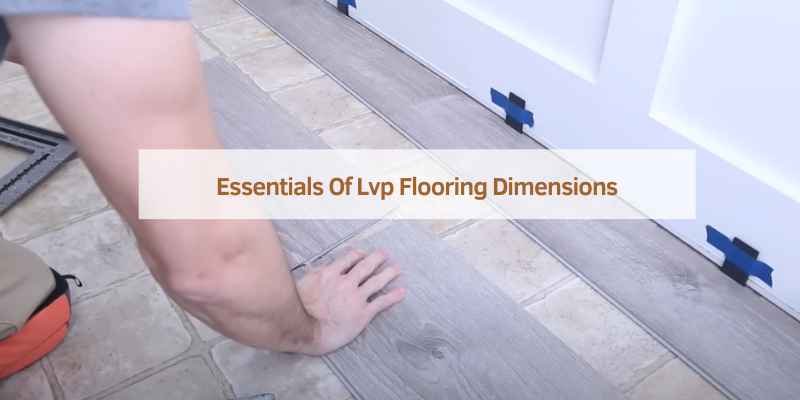
Calculating Square Footage
Calculating the square footage for your LVP (Luxury Vinyl Plank) flooring project is crucial. This ensures you purchase the right amount of material. Understanding this process can save time and money.
Measuring Room Size
Start by measuring the room size. Use a tape measure to get the length and width of the room. Write these numbers down.
Here’s how to calculate:
- Measure the length of the room in feet.
- Measure the width of the room in feet.
- Multiply the length by the width. This gives you the total square footage.
For example, if your room is 10 feet long and 12 feet wide:
10 feet x 12 feet = 120 square feetFactoring In Waste And Cuts
Always factor in waste and cuts. This ensures you have enough material. Add 10% to 15% to your total square footage.
Here’s how to do it:
- Calculate the total square footage of the room.
- Multiply this number by 0.10 (for 10%) or 0.15 (for 15%).
- Add this result to the original square footage.
For a room that is 120 square feet:
| Percentage | Calculation | Total Square Footage |
|---|---|---|
| 10% | 120 x 0.10 = 12 | 120 + 12 = 132 |
| 15% | 120 x 0.15 = 18 | 120 + 18 = 138 |
This ensures you have enough LVP flooring. It accounts for mistakes, cuts, and odd-shaped areas.
Deciphering Box Content
Understanding how many square feet are in a box of LVP (Luxury Vinyl Plank) flooring can be confusing. Each box has specific information that helps you calculate the coverage area. This guide will walk you through the essential steps for deciphering the box content.
Reading The Label
The label on the box contains critical details. First, look for the total square footage. This figure tells you how much area the box will cover. It’s usually displayed in bold or large font.
Check for the number of planks in the box. Different manufacturers pack different numbers of planks per box. Knowing this helps you plan the layout better.
Look for plank dimensions. The length and width of each plank help you calculate the total square footage. Use this information to understand how many boxes you’ll need.
Average Coverage Per Box
The average coverage per box of LVP flooring varies by brand. Typically, a box covers between 20 to 30 square feet. This variance depends on plank size and thickness.
Here’s a quick reference table:
| Brand | Plank Size | Square Feet Per Box |
|---|---|---|
| Brand A | 48” x 6” | 24 sq. ft. |
| Brand B | 36” x 9” | 30 sq. ft. |
| Brand C | 60” x 7” | 28 sq. ft. |
To calculate the number of boxes you need:
- Measure your room’s total square footage.
- Divide this number by the square footage per box.
- Round up to the next whole number to account for waste.
Example: For a 250 sq. ft. room, if each box covers 25 sq. ft., you’ll need 10 boxes.
Always buy an extra box to account for mistakes or future repairs.
Installation Considerations
Understanding the installation process is crucial before buying luxury vinyl plank (LVP) flooring. Proper preparation ensures a smooth installation and long-lasting results. Below, we cover the tools required and the preparation steps to follow.
Tools Required
Having the right tools makes the installation easier. Here are some essential tools you will need:
- Measuring tape: To measure the room dimensions accurately.
- Utility knife: For cutting the planks to fit.
- Rubber mallet: To tap the planks into place.
- Spacers: To maintain expansion gaps.
- Pull bar: To ensure tight seams between planks.
- Level: To check the subfloor for evenness.
- Pencil: For marking cuts on the planks.
Preparation Steps
Proper preparation is key to a successful LVP flooring installation. Follow these steps to ensure your floor is ready:
- Measure the Room: Use a measuring tape to determine the square footage. This helps you know how many boxes of LVP flooring you need.
- Acclimate the Planks: Leave the LVP boxes in the room for 48 hours. This allows the planks to adjust to the room’s temperature and humidity.
- Prepare the Subfloor: Ensure the subfloor is clean, dry, and level. Remove any old flooring, nails, or debris.
- Install Underlayment: Some LVPs come with attached underlayment. If not, lay a separate underlayment to reduce noise and add cushioning.
- Plan the Layout: Decide the direction to lay the planks. This is usually parallel to the longest wall or the main light source.
- Mark the Starting Line: Use a chalk line to mark where the first row of planks will go. This ensures a straight starting point.
Following these steps will help you achieve a professional-looking LVP flooring installation. Make sure to take your time and double-check your work for the best results.
Cost Implications
Understanding the cost implications of Luxury Vinyl Plank (LVP) flooring is crucial. Knowing how many square feet are in a box of LVP flooring can help you budget effectively. This section breaks down the costs into manageable parts to make your project planning easier.
Price Per Square Foot
The price per square foot of LVP flooring varies. It depends on the brand, quality, and style. On average, LVP flooring costs between $2 to $5 per square foot. Some high-end options may go up to $7 per square foot.
Here’s a quick overview of LVP flooring costs:
| Quality | Price Per Square Foot |
|---|---|
| Low-end | $2 – $3 |
| Mid-range | $3 – $5 |
| High-end | $5 – $7 |
Estimating Total Project Cost
To estimate the total project cost, you need to know the total square footage of the area. Measure the length and width of each room. Multiply these numbers to get the square footage. Add the square footage of all rooms together.
For example, if you have three rooms with the following dimensions:
- Room 1: 10 feet by 12 feet = 120 square feet
- Room 2: 14 feet by 16 feet = 224 square feet
- Room 3: 12 feet by 14 feet = 168 square feet
The total square footage would be 512 square feet.
Next, calculate the total cost:
- Determine the price per square foot (e.g., $4).
- Multiply the total square footage by the price per square foot: 512 sq ft $4 = $2,048.
So, the total cost for 512 square feet at $4 per square foot would be $2,048.
Keep in mind additional costs such as underlayment, installation, and any prep work. These can add to your total budget. Always account for a 10% overage to cover mistakes and future repairs.
Buying Tips For Lvp Flooring
Luxury Vinyl Plank (LVP) flooring has become a popular choice for homeowners. It’s durable, stylish, and easy to maintain. When buying LVP flooring, there are several factors to consider to ensure you get the best value for your money. Let’s dive into some crucial buying tips.
Quality Indicators
Understanding the quality indicators of LVP flooring is essential. Check the thickness of the planks. Thicker planks generally offer better durability and sound absorption. Look for a thickness of at least 5mm for high-traffic areas.
Examine the wear layer. A thicker wear layer means better protection against scratches and dents. Aim for a wear layer of 20 mil or more for residential use.
| Quality Indicator | Recommended Value |
|---|---|
| Plank Thickness | 5mm or more |
| Wear Layer | 20 mil or more |
Warranty And Brand Reputation
The warranty of the LVP flooring can tell you a lot about its quality. A longer warranty period usually indicates a more durable product. Look for warranties of at least 15 years for residential use.
Consider the brand reputation. Well-known brands often offer better customer support and product quality. Reading reviews and seeking recommendations can help you choose a reputable brand.
- Check for warranties of at least 15 years.
- Research brand reputation and customer reviews.
Lvp Maintenance And Longevity
Luxury Vinyl Plank (LVP) flooring is popular for its durability and easy maintenance. Proper care extends its lifespan and keeps it looking new. This section explores best practices for maintaining and ensuring the longevity of your LVP flooring.
Cleaning Best Practices
Regular cleaning is essential for LVP flooring. Sweep or vacuum your floor daily to remove dirt and dust. Use a soft-bristle broom or a vacuum with a hard floor setting.
For deeper cleaning, use a damp mop with a mild cleaner. Avoid harsh chemicals or abrasive tools. These can damage the surface.
Spills should be cleaned up immediately. Use a soft cloth to avoid staining. Never use steam mops. High heat can warp the planks.
| Cleaning Task | Frequency | Tools Needed |
|---|---|---|
| Dusting | Daily | Soft-bristle broom or vacuum |
| Mopping | Weekly | Damp mop, mild cleaner |
| Spot Cleaning | As needed | Soft cloth, mild cleaner |
Avoiding Common Damages
Preventing damage is key to extending the life of your LVP flooring. Use felt pads under furniture legs. This prevents scratches and scuffs.
Place rugs or mats at entrances. These catch dirt and moisture before it reaches your floor. Avoid rubber-backed mats, which can cause discoloration.
High heels and pet nails can scratch the surface. Keep them trimmed or use protective coverings.
Avoid dragging heavy objects across the floor. Lift them instead to prevent dents and scratches.
- Use felt pads under furniture.
- Place rugs at entrances.
- Avoid rubber-backed mats.
- Trim pet nails and avoid high heels.
- Lift heavy objects, don’t drag them.
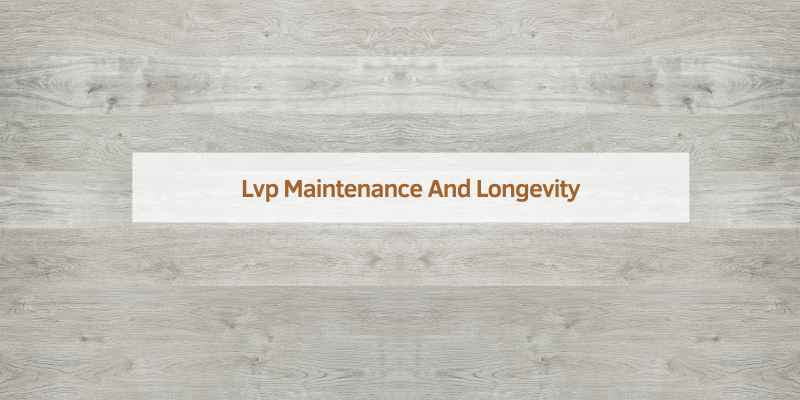
Frequently Asked Questions
How Much Vinyl Flooring Do I Need For A 12×12 Room?
You need 144 square feet of vinyl flooring for a 12×12 room. Always buy 10% extra for cuts and waste.
How Much Is Lvp For 1000 Sq Ft?
Luxury Vinyl Plank (LVP) costs between $2 to $7 per sq ft. For 1000 sq ft, expect $2,000 to $7,000.
How Many Boxes Of Laminate Flooring Do I Need For A 12×12 Room?
To determine the number of laminate flooring boxes needed for a 12×12 room, you need about 144 square feet. Most boxes cover 20 square feet, so you’ll need 8 boxes. Always buy an extra box for cuts and waste.
How To Calculate Square Footage For Lvp?
Measure the length and width of the room in feet. Multiply these numbers to get the square footage.
Conclusion
Understanding how many square feet are in a box of LVP flooring simplifies your renovation project. This knowledge helps in accurate planning and budgeting. Always check the packaging for specific measurements. Now, you can confidently purchase the right amount of flooring for your space.
Happy renovating!

